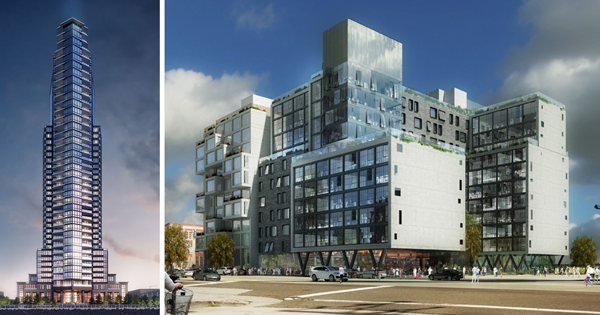Trending
Analysis: How Queens’ most expensive condo projects stack up to Brooklyn’s
Parity between the boroughs likely to continue, experts say

Brooklyn real estate may get most of the attention, but Queens is neck and neck with the borough when it comes to the most expensive condominium projects.
Between 2012 and 2017, the top condo project accepted to launch sales in Queens has been pricier than the top condo project in Brooklyn three times, while Brooklyn has topped Queens three times as well, according to a data analysis by The Real Deal. The lack of development in parts of northwest Queens outside of Long Island City could make this parity between the boroughs a fairly common occurrence moving forward, according to Jonathan Miller, CEO of appraisal firm Miller Samuel.
“It doesn’t jump out at me as an anomaly,” he said. “I think we’ll continue to see this during the development cycle. I wouldn’t use the word ‘often,’ but I think this is not an outlier.”
In 2012, for example, the three biggest condo projects were all in Queens. The roughly $145 million One Fulton Square project on 39th Avenue in Flushing topped the list, followed by Flushing’s roughly $102 million condo at 42-35 Main Street and Rego Park’s roughly $60 million project at 65-50 Wetherole Street. A Brooklyn condo did not show up until the number four spot: the roughly $50 million Ainslie Tower Condominium at 467 Keap Street in Williamsburg.
Queens topped the list in 2013 as well, with the roughly $75 million Infinity 8 condo at 132-35 Sanford Avenue in Flushing.
Brooklyn then dominated in 2014, grabbing all top four spots, with 429 Kent Avenue’s roughly $343 million Oosten condo at number one. It took the number one spots in 2015 and 2016 as well with the roughly $392 million 550 Vanderbilt condo in Prospect Heights and the roughly $427 million Austin Nichols House at 184 Kent Avenue in Williamsburg, respectively.
But Queens was back on top last year, with China Vanke and Adam America Real Estate’s roughly $225 million project in Long Island City topping the list and the roughly $216 million Tangram House South condo coming in at the number two spot. Brooklyn showed up at number three with the roughly $144 million Greenpoint condominium at 21 India Street.
Miller said the Brooklyn boom has been focused more on rentals than condos, which helps explain the number of large condo projects in Queens, especially given how interrelated the two real estate markets tend to be. He also said it initially just made more sense economically to focus on condos instead of rentals in Queens.
“When land prices in Queens really started to take off, especially in the northwest region, developers I was talking to at the time were saying the math doesn’t work,” Miller said. “The rents don’t support the land prices…so we saw a switch to condo activity earlier.”
George Xu, a prominent Queens developer at work on multiple condo projects with his firm Century Development Group, said buyers are continuing to pump condos into the borough’s market, and demand for them has stayed robust.
“There’s a market for all those units,” he said, “and then people are buying at the kind of price that developers are looking for.”
Over the past five years, the number of approved units in Queens has only beaten the number in Brooklyn during five quarters. In the fourth quarter of 2017, 10 Queens condo projects were accepted, representing 655 units and a $787 projected sellout. That exceeded Brooklyn in most metrics — the borough had 44 condo projects accepted but featured just 480 units and $532 million worth of product.
Derek Bestreich, president of the Brooklyn-focused Bestreich Realty Group, said that the growth in Queens has so far been fueled mainly by Asian buyers seeking homes in Flushing and people hoping for waterfront space in Long Island City. However, he maintained that demand for condos was actually much stronger in Brooklyn overall, which could contribute to the borough seeing lower sellout prices than Queens.
“Maybe there’s just been more supply built for that demand,” he said, “which maybe has brought down the price per foot a little bit in Brooklyn.”




